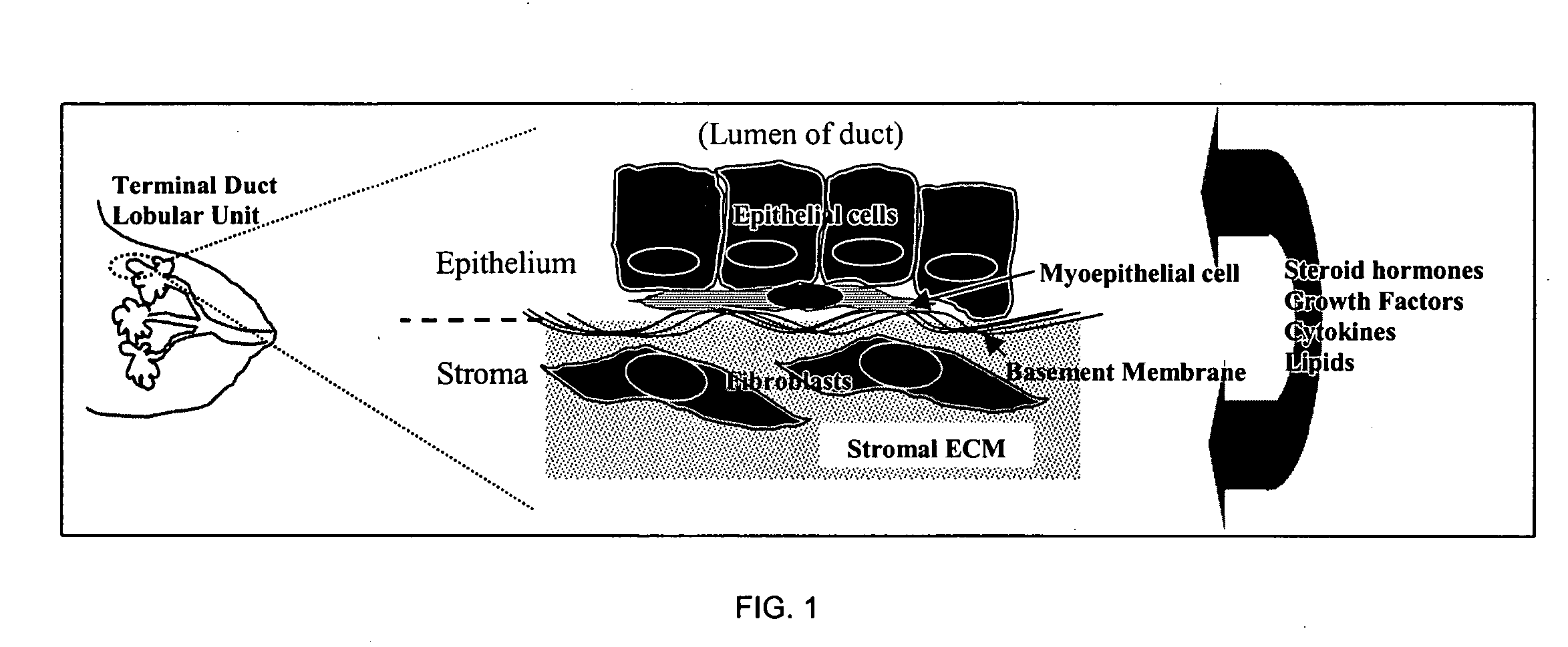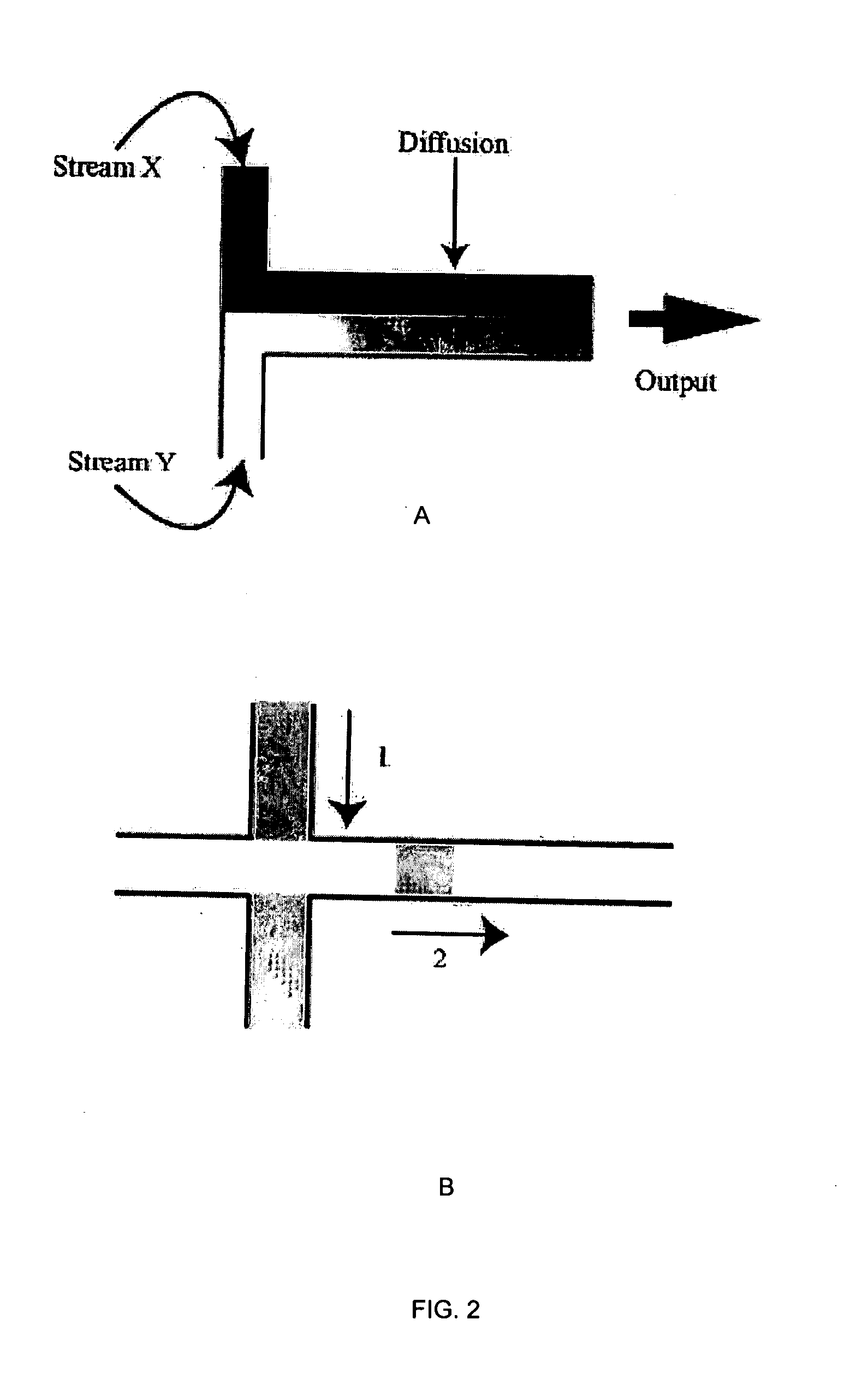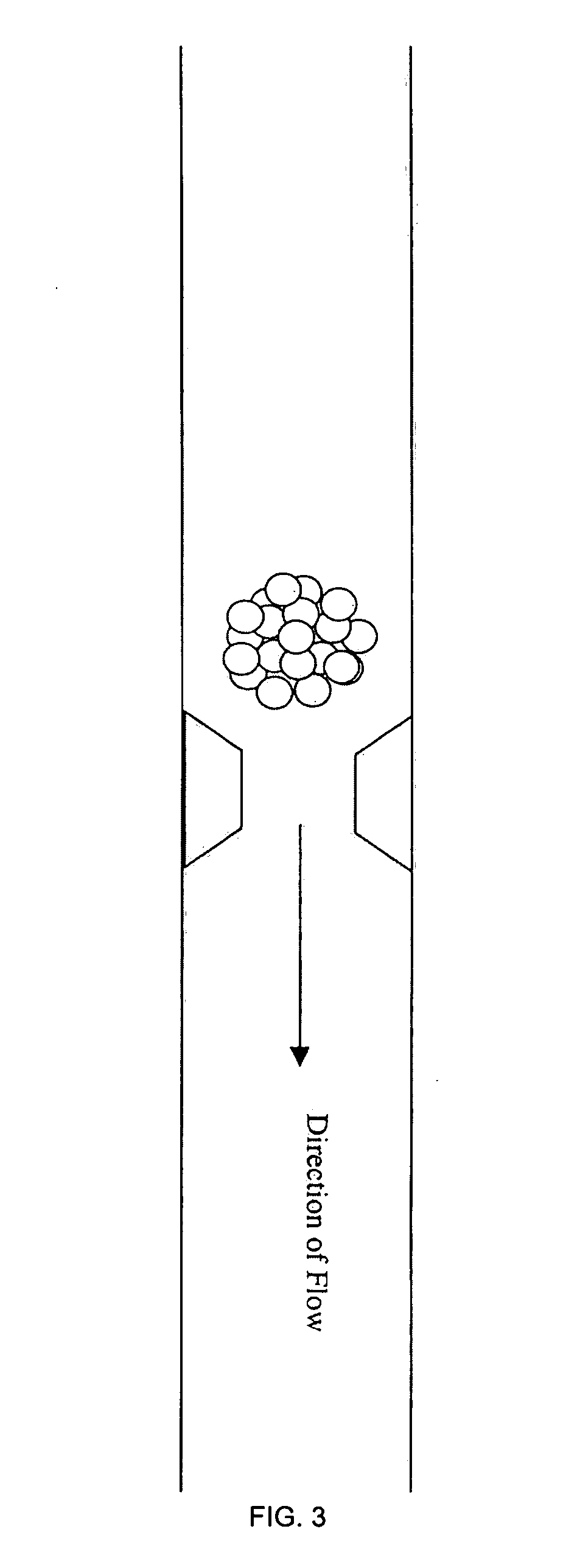Three dimensional cell cultures in a microscale fluid handling system
a micro-scale fluid handling and cell culture technology, applied in specific use bioreactors/fermenters, biomass after-treatment, instruments, etc., can solve the problems of complex and heterogeneous tumors, insufficient culturing methods, and insufficient culturing methods
- Summary
- Abstract
- Description
- Claims
- Application Information
AI Technical Summary
Problems solved by technology
Method used
Image
Examples
example 1
Initiation and Growth of Similar Sized Spheroids in a MS Device
[0059] In this prophetic example, cells are grown initially in plates as monolayers, then enzymatically detached, collected and introduced to a microscale (MS) device with multiple channels leading to chambers where the spheroids will form. This is done in such a way that equal numbers of cells are distributed to each chamber, insuring that the size of the spheroids that form will be uniform if maintained under identical culture conditions. Distributing cells to multiple chambers can be achieved in several ways, including introducing a uniform cell suspension through a single opening that branches to multiple channels each leading to a chamber, using concurrent flow through each channel or using a valve that opens onto each channel separately.
[0060] Alternatively, an equal volume of a uniform cell suspension is introduced through separate openings for each channel, or through separate openings directly into the chambers....
example 2
Distributing Spheroids of a Uniform Size to Chambers for Further Growth and Analysis
[0061] As an alternative to initiating spheroids in the MS device, it is also envisioned that spheroids may be grown by standard cell culture methods--on agar plates or in spinner flasks--and distribute them to the chambers of the microscale device using fluid flow. Spheroids of a uniform size can be attained by the use of physical structures such as filters, funnels or barriers in the fluid path that act as sieves. For example, FIGS. 3 and 4 illustrate the presence of such physical structures or obstacles in a channel of the microfluidic device, enabling the fluid, but not the spheroid to pass. Also, FIG. 9 shows latitudinal cross sectional views of chambers showing different ways of distributing equal numbers of cells or spheroids of a uniform size. Thus, if a funnel is used, all spheroids larger than the desired size pass through the chamber because they are unable fit in the large opening of the ...
example 3
Culturing Spheroids
[0062] Also, prophetically exemplified here are a variety of techniques for culturing spheroids. Once spheroids or surrogate tissue assemblies are in chambers, they are cultured by flowing media through the chamber, such that nutrients are replenished, and waste products are removed. The flow rate is slow enough to allow growth factors and other soluble signaling molecules in the spheroid microenvironment to carry out their functions before they are washed away from the spheroid. In this way, an essentially identical microenvironment is maintained in each chamber, allowing spheroids to form and grow at the same rate and develop similarly. In some cases, it may be desirable to change the type of media or some components at some point in the development of the spheroid. If desired, some chambers can be subject to different growth conditions or soluble factors in order to test their effects of spheroid formation. It may also be desirable also to culture spheroids in ...
PUM
 Login to View More
Login to View More Abstract
Description
Claims
Application Information
 Login to View More
Login to View More - R&D
- Intellectual Property
- Life Sciences
- Materials
- Tech Scout
- Unparalleled Data Quality
- Higher Quality Content
- 60% Fewer Hallucinations
Browse by: Latest US Patents, China's latest patents, Technical Efficacy Thesaurus, Application Domain, Technology Topic, Popular Technical Reports.
© 2025 PatSnap. All rights reserved.Legal|Privacy policy|Modern Slavery Act Transparency Statement|Sitemap|About US| Contact US: help@patsnap.com



